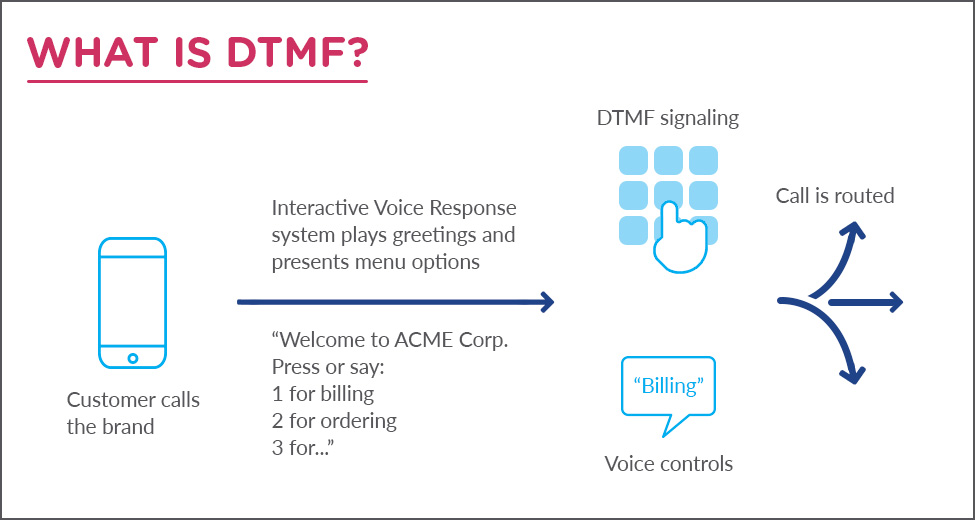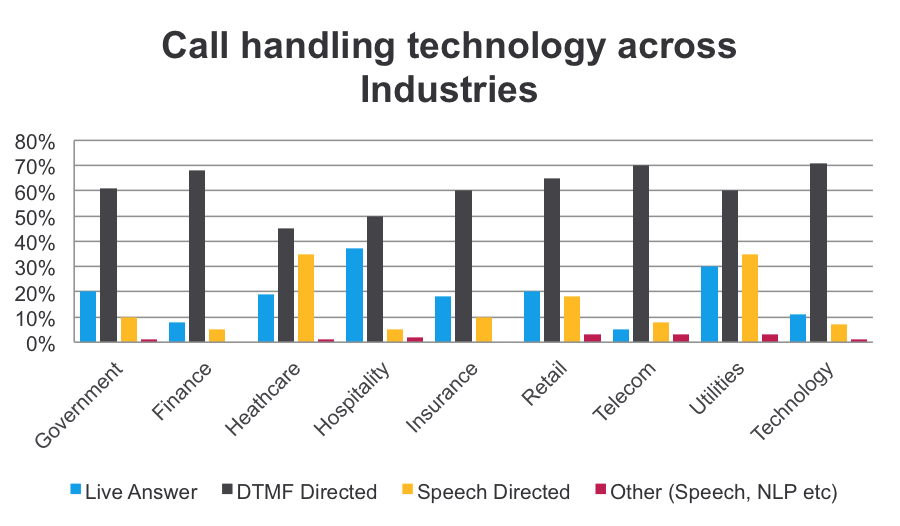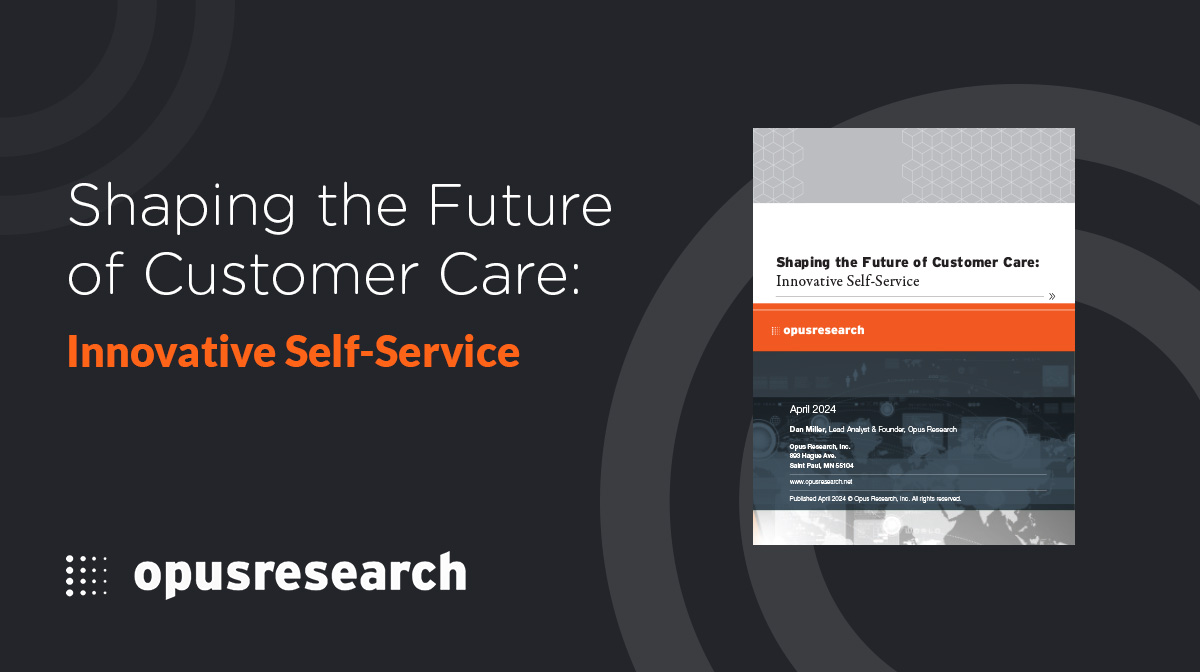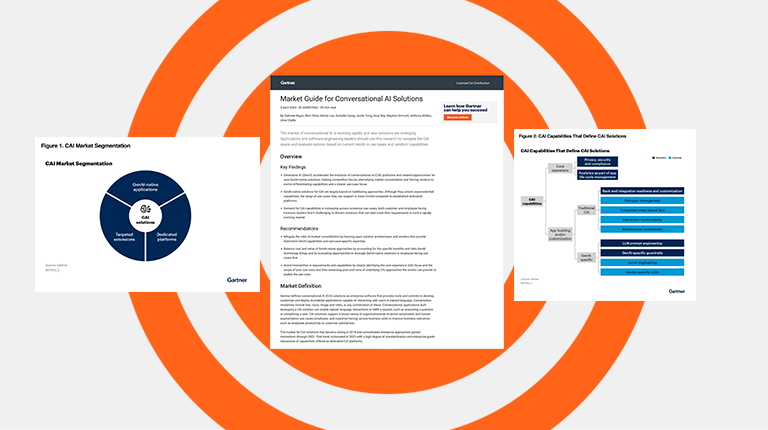Press 1 for lower CSAT, 2 for lost revenue
We have all been on the receiving end of this ancient customer service technology. “Press 1 for sales, 2 for billing, 3 for something else…”. Dual Tone Multi-Frequency Touchtone dialing (DTMF) presents a list of menu options to choose from and directs your call accordingly.
For businesses, it’s a low-cost, easily deployed system that handles simple tasks and routing. But for the caller, there is nothing more frustrating than listening to all 10 menu options, just to find that nothing fits your situation. Don’t remember what option number 5 was? Well, “listen to the whole list, as our menu options have changed.”

At its start, in the late 1970s to early 1980s, DTMF technology was a paradigm shift for contact centers. For the first time, callers could complete self-service by selecting the right menu option, reducing average handle times and misroutes. In the late 1990s, speech directed dialogue was introduced. Now, callers could say ‘billing’ or ‘one’ instead of pressing a number. It was definitely a better, hands-free option for self-service.
But a lot has changed in past few decades.
Businesses have evolved. For modern businesses, telephony is one of the many channels used to engage with customers. They strive to deliver state of the art technology and customer experience across all channels of communication – web, mobile, social media and telephony.
Customers have evolved. Today’s tech-savvy customers demand seamless experiences across all channels. Modern customers are far more vocal than their predecessors and take a lot of pride in the brands they associate themselves with. So a dated or bad customer experience has an immediate impact on brand loyalty.
Customer service has evolved. As a joint effect of these two shifts, customer service has transformed over the past decade. It’s no longer an afterthought but ingrained in all aspects of the business. Customer obsession, a key differentiator for many leading businesses, is the new marketing.
Then why do some brands still use DTMF technology?
DTMF directed dialogue and speech directed dialogue are still the primary choice of technology for call handling across industry verticals.

The obvious reasons for this are cost and convenience. On a per transaction basis, DTMF IVR costs a fraction of live agent calls and is easy to deploy.
But what brands fail to account for are the hidden costs of using a dated technology like DTMF.
Lost opportunity
As businesses grow, the contact center menu options become lengthy and complex. Almost 50% of large contact centers offer 7 or more menu options to choose from. And 30% of them need 4 or more routing menu levels before the caller reaches his or her destination.
This results in ‘zero-outs’ (callers pressing 0 or trying similar shortcuts to get to a live agent) or call abandonment. Zero-outs defeat the purpose of self-service technology and call abandonment directly correlates to lost revenue.
Decreased customer satisfaction
The next immediate impact of DTMF service is reduced customer satisfaction and increased customer frustration. Imagine trying to enter a hotel building where the entrance door keeps revolving without letting you out or an elevator that keeps taking you to a wrong floor. That is exactly how customers feel when faced with this dated technology. Poor touch-tone experiences make callers feel trapped and frustrated.
76% of US adults never go back to a brand after an initial bad contact center experience. An estimated $41 billion is lost by US companies each year as a result of a bad customer experience.
Reduced brand equity
The modern customer is well aware of new advancements in the industry: they hear about Artificial Intelligence, bots, and social customer care and want to engage with brands that adapt to these new trends.
While social media is still trying to prove itself as a primary channel for customer service across many industries, it’s a popular platform for customers looking to share bad experiences. In fact, 59% of 25-34 year-olds share poor customer experiences online. The social media mistakes and backlash can cost brands millions of dollars.
A Better Way
DTMF directed dialogues or speech-controlled dialogues may work well for businesses running minimal or simple transactions. But for companies looking to differentiate on the basis of customer experience — across all service channels – a more modern approach to customer care is necessary. Companies need to embrace solutions that enable customers to accomplish tasks quickly and easily, so that experience doesn’t suffer at the expense of cost savings.
Thankfully, there is a better way. It’s time for a smarter, more seamless approach. Discover how innovative self-service solutions are reshaping customer care — and what your business can do to stay ahead. Explore the future of customer service here.




